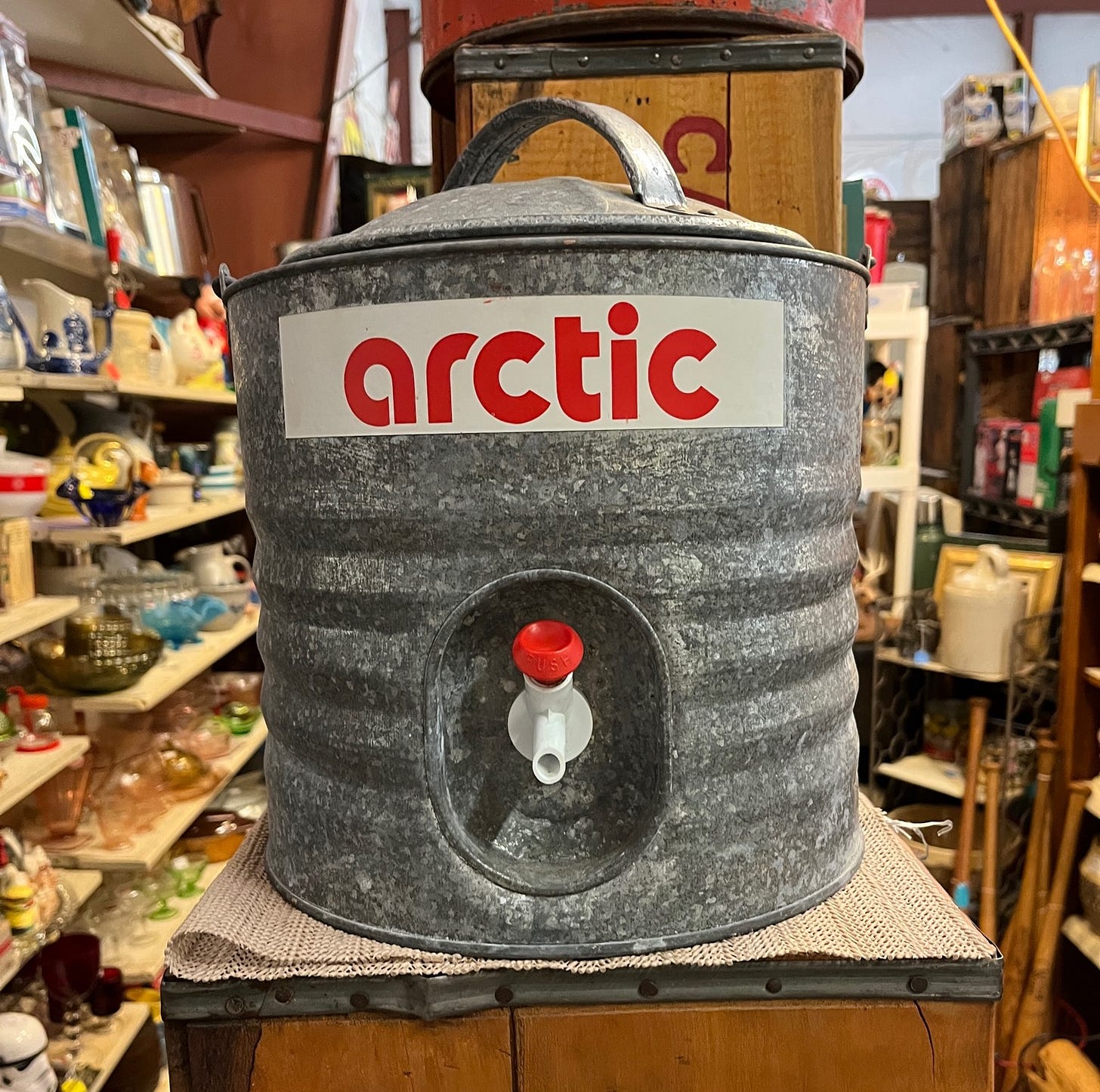My Fellow Shennyer:
The Saturday of this summer is starting to turn into Sunday, with all its attendant regrets and unease for the coming Monday of the school year. I’m trying my best to pack in fun these last weeks. Here, to keep the feeling going, are pics from when I was away:

Something about this summer—the Program-directing workload? the gloomy weather here?—has made me feel more heavily the swift passing of time. It’s like a door is closing unless I don’t take preventative steps. But what door exactly? What steps?
Yours:
Dave
Endorsements
1. Eve Kosofsky Sedgwick
Eve Sedgwick is my favorite counterexample against ‘Stay in your lane’ imperatives; where would queers be without the sharp, compassionate thinking of this heterosexual? I’m not a completionist, but I’ve read a number of her works, with ‘Paranoid Reading and Reparative Reading’ and, these days especially, Epistemology of the Closet rising to the top, and I’m often appending the notes I take with something like ‘Sedgwick!—just to wallow in how singular her voice his, how idiosyncratic her rhetorical moves. Originally, I was going to give you a bunch of examples, but I’d prefer to let you find the Sedgwickianisms you love yourself, and so instead I’ll blockquote this bit, from ‘Paranoid Reading’, which remains the only interesting thing I’ve read about camp since Sontag in the 60s:
As we've seen, camp is currently understood as uniquely appropriate to the projects of parody, denaturalization, demystification, and mocking exposure of the elements and assumptions of a dominant culture; and the degree to which camping is motivated by love seems often to be understood mainly as the degree of its self-hating complicity with an oppressive status quo…. The desire of a reparative impulse, on the other hand, is additive and accretive. Its fear, a realistic one, is that the culture surrounding it is inadequate or inimical to its nurture; it wants to assemble and confer plenitude on an object that will then have resources to offer to an inchoate self.
For this inchoate self who camped before he knew what camp was, this feels so accurate.
2. Matching Your Coffee to Paint Swatches
N. once read that Calvin Klein kept a Pantone® paint swatch in his kitchen to signal to his man what color he wanted his coffee to be, and Pantone®’s VP of consumer licensing verifies this. I like a ludicrously small amount of cream in my coffee—a teaspoon is pushing it—and anyone preparing coffee for me always overdoes it, so of all the ways the rich can be horrible, here’s one I’m endorsing. Now: Pantone® requires not only that ® after it, but also a membership fee I don’t have underwear-fortune $$$ to pay, so to use hex codes, I like my coffee at around a #553B20:
Might even be darker than that. I’m looking only for a slight opacity to coffee’s shiny depths. N., on the other hand, is a #C99C6E:
And you? I used this color picker to find my hex codes, and I’m genuinely curious where y’all set your coffee hues. (Sound off in the comments!) For a while there was a restaurant in Daly City that used robots to make your hamburger, and they were delicious. Are the days of VC money being thrown at useless tech exploits over? Because if not, I’d pay college-professor $$$ to go somewhere and push the button of what color coffee I’d get in my cup.
How to Write a Slow Book
First: write very, very quickly. The slow book I’m writing began as an open license I gave myself to write about sex while at my first writing residency. I didn’t know how they went, residencies, so I brought one essay to finish and another to revise, and when I completed both jobs in 4 days I needed something to do for the rest of the month, so I wrote about sex and shame and didn’t really stop. I averaged 3,000–4,000 words a day and went home with 85,000 words.
It felt like wasted time. I’d written quickly before, getting 52,000 words down for NaNoWriMo in November 2010, after many friends and colleagues told me to expect not to write at all the first year of my first academic job. I wrote a novel about a straight English professor whose only son kills himself just weeks after coming out, precipitating (a) his divorce and (b) his taking a teaching gig in the Deep South, where he volunteers for a suicide hotline. I felt good about the process, but the product was no good, and it’s a whole book I’ve written that’ll likely never see a reader.
For whatever reason, I stuck with the sex/shame book and wrote to some kind of conclusion, ending up at 119,000 words. Most of them a mess. Then I got a sabbatical and started the book all over again; this time, I’d write my story in chronological order, starting at boyhood and moving slowly to the present, so I wouldn’t miss anything. I had a sense that I needed to lay down cause and effect for me, for my process, but I knew all along that the product wouldn’t work as a straight chronology—my plot, if I have one, doesn’t unfold the way readers would want.
Memoir Take Two took longer to write, came more slowly. Reconstructing memories always feels like drawing with crayons I’ve misplaced in various rooms of the house. Sabbatical residencies helped, and I was at a clip until the pandemic hit, but by October I was able to find another conclusion, and ended up with 109,000 words.
Then I started the whole thing over again.
Why is this so slow and tedious? For one thing, I’m practicing what I preach. I teach students that the mission statement of any memoir is never This Happened To Me, but something more complex: That this happened tells me something the writing of this book is meant to simultaneously discover and disclose.
In short, I don’t know what my story means, I don’t know where its significance lies, I only trust that somewhere in there lie significance and meaning, and the only way to find them is to write it.
I have to move intuitively, throwing a lot of things at the wall to see how they might come together. Why not let that be the book, a memoir like a Jackson Pollock painting? Well, you see, for 45 years, sex and my past have been, for me, a Pollock painting. It may indeed be beautiful to behold all at once, set at epic scale, but as the one person who might have such perspective, let me tell you that it hasn’t felt beautiful.
Which leads me to one of the challenges of writing an honest memoir: How to do preserve something of the mess of our lives while working it into a worked shape?
These days, I’m writing about the closet, locus of every first-wave gay memoir: Here’s the long and tragic story of how I finally came to accept etc. etc. To make it interesting, if only to myself, I’m trying to locate scenes of Closet Thinking that go beyond sexual desire, because there’s only so much to say about wanting boys and feeling bad about it. Here’s something I’ve recently thrown at the wall:
It’s after dinner, and I’m 6, sitting on the blue shag in my bedroom and reading a science book my aunt, a gradeschool teacher, has loaned me. I like the book for everything it’s teaching me about the world, but I’ve come across a word I don’t know: Evaporation. I read what I can of the paragraph below, which says that the air we breath has tiny drops of water in it? and depending on how many drops of water are there, some liquids can turn into air? lifting the drops upward? where they float around like everything else?
It seems wrong to me, an impossible fantasy. I feel the same unease in my stomach I have after a bad dream, so I take the book to my dad and ask him to explain it. ‘Put a glass of water on your dresser,’ he says, ‘and it’ll evaporate. There’ll be less water in the glass when you wake up.’
When I really want to scare myself, I imagine someone lurking in the darkness of my bedroom at night. I consider Dad’s experiment, see in my mind that glass of water on the dresser, evaporating sneakily, while I sleep. Would it attack me, the floating water? How can I be sure that the water, floating in my bedroom at night, wouldn’t attack me?
Back in my room, I shut the door and lock it, because I know that what I have to do will make my parents angry. I take a pen and open the book to the passage on evaporation, pressing hard to the page, scratching out every word of that science. If I can’t read it, it doesn’t have to be true.
Will it get cut? Too early to say, but I like it as an origin story to my predilection for denying reality, denying the truth laid bare in front of me. I’ve written before that every closet gets built around the homosexual by the hetero society that prefers its being there, but what I’m trying to explore is how some of us gays seem way more ready to step inside that dark place, even taking a deep comfort from staying there.
But I’m only halfway through my material and I’m already at 9,000 words, and only this week am I seeing the shape of the chapter come forth, almost literally as though out of a fog. And when I make it to the end, which could be at 20,000 words, I’ll only then see what I have to say about the closet. Then I’ll need to revise everything in such a way that gives you, the reader, an experience of a thought process I’ve found myself at the end of without quite knowing how I got there.
This is one way to write a slow book: know seemingly nothing about your subject, even (especially?) when the subject is yourself.
I hate how long it’s taking. Why the rush? The rush is about getting readers and approval, proving to myself I haven’t wasted time again on a book nobody wants, publishing very little in these slow years, when I could have been selling magazine pieces or writing, I don’t know, another NF book about family ties?
Writing this memoir is a lot like the old saw about documentary filmmaking: you shoot at least ten times the amount of stuff you use. I have hundreds of memories all fighting to make it into this chapter, dozens of source texts and others’ thinking to frame it all around. Which reminds me of one of my favorite quotes about writing, from Mary Shelley’s introduction to Frankenstein, which I found again in grad school at the exact time I needed it: ‘Invention, it must be humbly admitted, does not consist in creating out of void, but out of chaos….’
Which is the other way to write a slow book: accept the chaos always enfolding your material, which is the chaos of your life, which is, somehow, what’ll make your life truly beautiful.
After a year of posting cool natatoria, I seem to have run out of cool natatoria. (If you find any, please send; I’m always happy to gawk at them for a while.) So it’s time for a new segment for Shenny, inspired by the (I’m told) popular series on my Instagram feed: ‘Things I Did Not Buy at the Antique Store.’ First up, this gorgeous drinks cooler I found after endorsing it in my last double-issue:














I drink black coffee but according to Adobe Capture the true color is #231017, RGB 35, 16, 23. Probably the white of the cup reflecting? I now have to explain to my wife why I'm taking close up photos of my coffee.
The natatorium at the New Orleans Athletic club where my wife and I currently swim is pretty cool, although I’m not sure any of the photos fully capture its magic: it’s as much about the building (an old 19th century mansion that’s been an athletic club since the late 19th/early 20th century) as it is about the pool. But here’s some photos nevertheless: https://neworleansathleticclub.com/fitness/swimming/